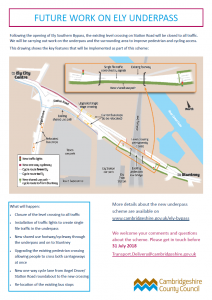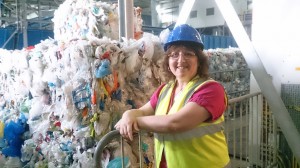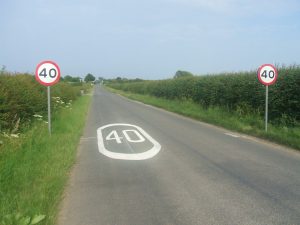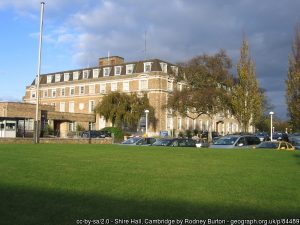
Air quality and the effects of air pollution were the subject of a morning conference in Huntingdon yesterday. It was an event my colleague Cllr David Jenkins (Histon) and I had instigated at a meeting of the county council’s Health Committee many months ago, so I was delighted to see it finally come and to have the chance to attend.
The event was far better attended than my photo (from near the front of the room) suggests, with district and county councillors and council officers from across the county and across a range of different professional disciplines. I was also pleased to have secured places for a couple of members of the local Joint Parishes HCV Group who have been working hard on the problems caused by lorries cutting through villages between the A142, A141 and A14, including Sutton, Earith, Haddenham, Bluntisham, Cottenham and Willingham.
Sharing knowledge and raising the profile
Stuart Keeble, consultant in public health, opened the event, which he reminded everyone was timed to take place in the week of Clean Air Day. Air quality issues were achieving a higher profile, and this was an opportunity to share knowledge.
We had a brief opportunity to discuss what we wanted to achieve from the event. In our small group, we talked about learning more about the role of district councils as planning authorities and their influence on air quality; better links between county and district councils; a recognition of the importance of air quality; identifying who was responsible and what powers they had to effect change; identifying and overcoming barriers to effective action; possibilities for collaboration, and for specific actions not just more monitoring; including businesses in the discussion; the national dimension; and ensuring air quality is at the forefront of the thinking of council officers working in disciplines such as planning and transport.
We learned for example that Public Health England has developed a tool that can calculate the cost of bad air quality to the NHS through its effect on health – a really useful opportunity to enable councils to quantify requests for developer contributions to the health service for the air quality effects of their developments.
Air quality and health
National air quality specialist Dr Beth Conlan (in the photo above) put some more figures to those air quality effects on health. Poor air quality contributes to 40,000 premature deaths each year in the UK, from cancer, asthma, stroke, heart disease, diabetes, obesity and dementia. Between five and six per cent of all-cause mortality is attributable to air pollution from particulates, and air pollution causes more harm than passive smoking. There will be 2.4 million new cases of disease in the UK between now and 2035 which are attributable to air pollution. The cost of this toll on our health has been calculated at £20 billion a year.
Particulate matter in the air arises from three types of source: natural, primary and secondary. Natural particulates include sea spray or ash from forest fires. Primary particulates are directly released in to the atmosphere by a range of human and other activities. And secondary particulates are formed by physical and chemical reactions from other pollutants.
The two main air quality measurements used are of small particulate matter (PM2.5) and of the ‘greenhouse gas’ nitrogen oxides (NOx, including nitrogen dioxide NO2). Though most attention is focused on transport as a source of these pollutants, it is not the only factor: domestic wood and coal burning, including those popular wood-burning stoves in so many of our homes, is a major contributor to PM2.5 – something we are told the government may be issuing some sort of regulations on. The government publishes up-to-date air pollution information and forecasts at https://uk-air.defra.gov.uk/
Exceedances of NOx limits mostly result from traffic, and particularly so in urban areas – ‘street canyons’ where tall buildings on either side of the road trap pollutants at low levels; slower road speeds (40MPH is the best speed to minimise NOx); more vehicles. Across the EU, 64 per cent of NO2 exceedances come from road transport. And of course there has been the ongoing ‘dieselgate’ scandal over the falsification by some car manufacturers of diesel emissions data.
Legislation gives local authorities and others a number of powers to tackle air pollution in areas where there known to be issues.
The situation in Cambridgeshire
Iain Green, Cambridgeshire’s senior public health manager for environment and planning, then outlined the position more locally, and drew attention to the information contained in the Joint Strategic Needs Assessment (JSNA). This aims to describe the current and future health, care and wellbeing needs of the local population and to inform the local Health and Wellbeing Strategy.
Major roads and urban centres such as Cambridge, Huntingdon, St Neots and Wisbech have the highest levels of pollution. East Cambridgeshire levels are generally lower though NO2 levels in Ely are similar to other urban areas – and of course pollution levels in South Cambridgeshire are higher in the area of the A14. In England the most deprived areas tend to have the highest pollution levels and there is often considerable new house-building in these more polluted areas.
257 deaths in Cambridgeshire were attributable to air pollution in 2010, but poor air quality also contributes to more calls to NHS 111, more GP visits, and more trips to A&E particularly for people who are predisposed to breathing problems, such as those with asthma or chronic obstructive pulmonary disease (COPD). NO2 levels tend to be higher in winter and PM2.5 levels higher in spring.
Focus for the future includes switching passenger fleets such as buses to low emission vehicles; encouraging walking and cycling; providing more information such as pollution text alerts to vulnerable people; and considering air quality when planning new developments. The county council has recently organised air pollution training for transport planners, and new pages on Cambridgeshire Insight.
We had another opportunity for group discussion, and it was exciting to hear councillors from the new administration in South Cambridgeshire talking about their keenness to tackle the determinants of poor health. We also considered the lack of air quality measurement in many parts of Cambridgeshire, and the potential role for residents individually and collectively in ‘crowd-sourcing’ air quality data.
Who does what?
Jo Dicks, environmental quality and growth manager at Cambridge city council, outlined the range of responsibilities for air quality across different levels of government.
The government sets health based objectives and national strategy, and monitors and models air quality for compliance with EU requirements. (Though it has had to be taken to court several times by environmental group ClientEarth over its failure to do this properly). The Secretary of State for the environment is responsible for compliance with national objectives and EU limits, but can devolve these duties to local councils – though this has not (yet) happened.
Councils are required to monitor, review and assess air quality against the objectives, and if the objectives are not achieved, the council must declare an Air Quality Management Area and produce an action plan. There is technical guidance, lots of it, on this.
District councils have the lead role for air quality, including periodic reviews and assessments, and an Annual Status Report which must be signed off by the Chief Executive. They must designate Air Quality Management Areas (AQMAs) where appropriate, and amend or revoke them in light of subsequent reviews. In doing so, they should liaise with the county council and consult on the action plan.
The county council must ensure that district councils’ Annual Status Reports are signed off by the director of transport and the director of public health, and help district councils fulfil their AQMA responsibilities.
District councils have powers under the Clean Air Acts, the National Planning Policy Framework, road traffic regulations against vehicle idling, and legislation regarding some industrial processes. County councils and transport authorities can use their Local Transport Plans, powers under the Transport Act 2000 including congestion charging, and traffic regulation orders.
The Environment Agency also has responsibility for overseeing larger industrial processes – we thought this might include the proposed incinerator at Waterbeach.
Cambridge AQMA
Cllr Rosy Moore from Cambridge talked about the Cambridge air quality action plan for the next five years. An Air Quality Management Area was designated over a large area of Cambridge in 2004, and the latest action plan aims to reduce local traffic emissions as quickly as possible, maintain levels of pollutants below national objectives, and protect public health by improving air quality in future. Priority actions include lowering taxi emissions; reducing emissions from buses, coaches and HCVs; using planning policies; improving public health; and a feasibility study for implementing a Clean Air Zone. (More about Clean Air Zones here). A consultation on this is being launched on 21 June and will run to 18 September.
Co-benefits of active travel, air quality and health
Stuart Keeble outlined some of the health benefits of physical activity, and the relationship between this and air quality. Random fact: you would have to walk over five hours per day for the health benefits of exercise to be outweighed by the health effects of air pollution, even in a fairly high-pollution area.
What happens next?
We were all keen to continue and develop the shared understanding we had begun to achieve, and to retain the energy from the event. I suggested something along the lines of a parliamentary Special Interest Group, open to all councillors and council officers with an interest in the subject and able to continue working together on this. We talked about better harmonising what we are doing, ‘mainstreaming’ air quality throughout the work of our respective councils, and expanding air quality monitoring according to need.
Cambridgeshire’s director of public health Liz Robin closed the event thanking everyone involved and expressing a wish to use the output of the event to effect progress, and to continue working together.









